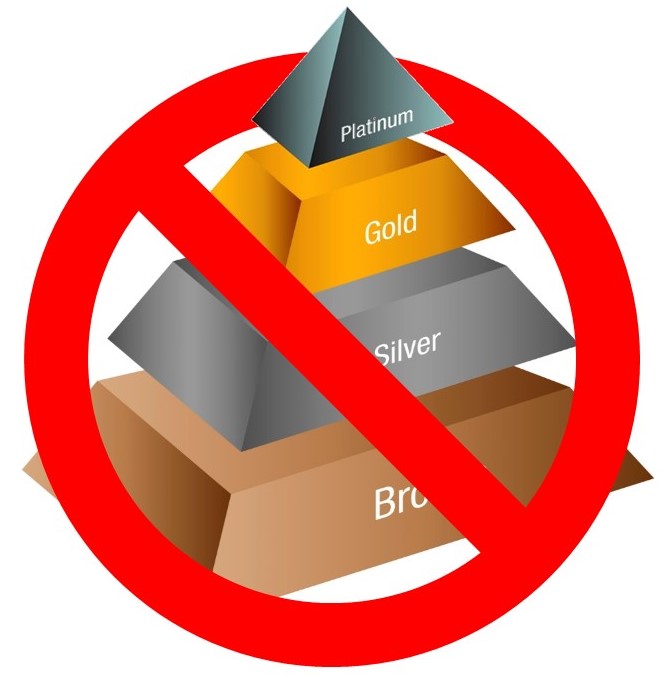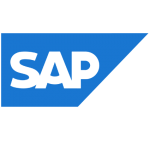If you are a vendor, you probably have a partner program to manage your partners. What’s interesting though is how many vendors talk about how much the industry and partners have changed over the last few years, and yet they continue to manage those partners using an outdated program design created 20 years ago.
What I mean by design, is the structure of the program – i.e. how many and what type of partners, and more importantly, how you recognize and reward success. For most vendors, that structure uses a precious metals naming convention (Platinum, Gold, Silver, etc) to differentiate and recognise their most valuable partners.

More recently, we’ve seen vendors shy away from this naming convention, and use descriptive words like Elite, Professional, Select, Professional, Premier, Expert or Authorised to describe partners. But I have two issues with this:
- If the words aren’t significantly different, then it can be confusing to both customers and partners to recognise excellence. For example, is Professional better than Expert, or is it the other way around? And is this the highest tier, or is there something better (like Elite?)
- If the program changes the names of the tiers, but still recognises and rewards partners using the same metrics, then it’s just an outdated structure in a new outfit.
Why is this a problem
In order to understand why programs are outdated, we need to better appreciate the industry trends that have impacted traditional programs and why:
- Partner sales models shifting to recurring revenue. Partners now invoice customers via a recurring revenue model, which means that in the early stages (when marketing funds are most needed) their revenue is small. Programs which reward partners based on quarterly revenue incorrectly interpret these partners as small, whereas the revenue they generate throughout the lifecycle of the customer far exceeds the revenue from a perpetual license sale
- Partners that don’t sell product. We’re seeing a number of ecosystems where the vendor’s partners don’t actually make money from the license sales, but rather from the services they provide around the product. While these services are critical to enabling the sale, some programs are unable to recognise these partners because they don’t show up in POS reports
- Partners that collaborate with other partners. As customer environments become more complex, partners are collaborating together to provide solutions that require skills outside their scope of expertise. Very few vendor programs understand or recognise these partner-to-partner relationships

Suggestions for Improvement
With the clients we work with, we’re slowly seeing a change to adapt the programs to current market requirements (albeit slower than we would like). Here’s our Top 6 tips for best practice program development:
1. Recognise Influence and Consultant channels
Create program Tier(s) that recognise partners that influence your sale but don’t generate any direct revenue for you. This importance of this tier needs to be acknowledged by your whole business, which can be a challenge for a sales organisation who struggle to reward partners who do not directly contribute to revenue.
2. Reward behaviour, not results
Most vendors reward partners for achieving a result (eg. a revenue target) but can be disappointed if the way that result was achieved created unintended consequences (eg. aggressive discounting or poaching). Instead, consider rewarding the behaviours that you want to see (eg. new client introduction, product demonstrations, lead generation, etc)
3. Create “push” and “pull” elements
For a program to be truly valuable to a partner, it can’t just be about the relationship between the vendor and the partner… it must also bring value to the end-user. Successful programs have both a Push element (persuading the partner why they should get accredited, and why they should promote that to their customer) and a Pull element (explaining to the customer why that accreditation is important, and why they should buy from a partner who has been accredited).
4. Communicate the benefits in their language
Partners typically don’t leverage programs because they don’t understand the program, don’t trust the program, or find it too difficult to use the program. Make sure you communicate the program in the partner’s language, especially to overcome objections (eg. our portal may be cumbersome, but spending an extra hour to use the Deal Reg system may generate the same profit for you as the 3-6 months you spent to win the deal in the first place). Make sure you communicate the successes and the profit return to the partner.
5. Promote internally and externally
Most partner programs reward sales performance. At the annual sales kick-off, partners typically get rewarded for highest revenue, fastest growth, largest deal, etc. Think about adding some rewards that recognise other attributes that contribute to the revenue result. This could be Best Influencer, Best Partner-Partner Engagement, Alliance Partner of the Year, Customer Retention Award, etc. And then promote these wins both internally (to your Sales, Support, Marketing and Finance teams) and externally (to partners, customers, other Influencer partners)
6. Establish non-financial rewards
While partners will always be grateful for financial rewards, the most valuable thing you can do for your partners is to promote them in a way that makes them look good to their customers and helps them win more business. Positioning them as experts to customers through your communication vehicles, or introducing them into accounts where they can sell services, or creating case studies about how they provided solutions can be much more valuable to them financially than the value of traditional rebates.
Summary
Partner programs will continue to evolve as the industry evolves, and no doubt, we’ll see innovative ideas to engage and reward partners as business models change. If you’ve done or seen something you think is ground-breaking, we’d love to hear from you at mmoses@channeldynamics.com.au


